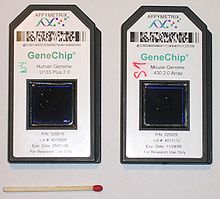
The thanatotranscriptome denotes all RNA transcripts produced from the portions of the genome still active or awakened in the internal organs of a body following its death. It is relevant to the study of the biochemistry, microbiology, and biophysics of thanatology, in particular within forensic science. Some genes may continue to be expressed in cells for up to 48 hours after death, producing new mRNA. Certain genes that are generally inhibited since the end of fetal development may be expressed again at this time.[1][2][3]
- ^ Pozhitkov AE, Neme R, Domazet-Lošo T, Leroux BG, Soni S, Tautz D, Noble PA (January 2017). "Tracing the dynamics of gene transcripts after organismal death". Open Biology. 7 (1): 160267. doi:10.1098/rsob.160267. PMC 5303275. PMID 28123054.
- ^ Javan GT, Can I, Finley SJ, Soni S (December 2015). "The apoptotic thanatotranscriptome associated with the liver of cadavers". Forensic Science, Medicine, and Pathology. 11 (4): 509–516. doi:10.1007/s12024-015-9704-6. PMID 26318598. S2CID 21583165.
- ^ Williams A (21 June 2016). "Hundreds of genes seen sparking to life two days after death". New Scientist. Retrieved 6 March 2022.